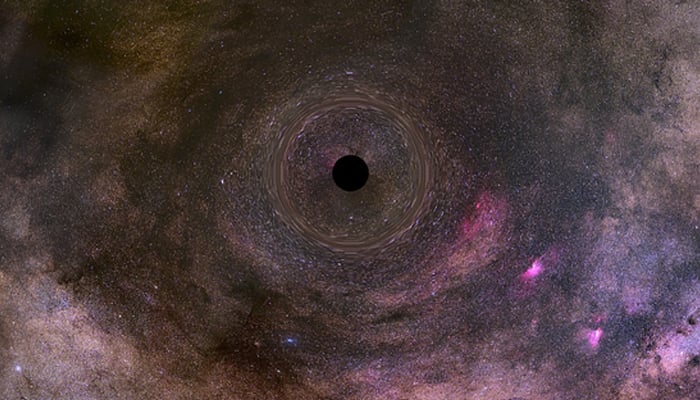Supermassive black hole discovered for the first time

Astronomers have been able to detect a supermassive black hole — estimated to be 30 billion times the mass of our Sun and the “biggest ever seen” — in the universe at a distance of millions of light years.
Astronomers called it an ultra massive black hole in a study published in the journal Monthly Notices of the Royal Astronomical Society that said that it is so big that they are still trying to comprehend it.
The author of the study from Durham University, UK James Nightingale told BBC Radio Newcastle that he is also trying to understand the magnitude of this black hole and that the black holes can’t be bigger than this one.
The ultra-massive black hole was detected with the help of a new technique called gravitational lensing. Galaxies and black holes have their gravitational pull that disturbs the way of light.
Similarly, a nearby galaxy was used as a magnifying glass to bend the light of the objects located in distant places making their light look bigger.
The bigger light was detected by astronomers from Earth.
“Most of the biggest black holes that we know about are in an active state, where matter pulled in close to the black hole heats up and releases energy in the form of light, X-rays, and other radiation,” Nightingale added.
He also mentioned: “However, gravitational lensing makes it possible to study inactive black holes, something not currently possible in distant galaxies. This approach could let us detect many more black holes beyond our local universe and reveal how these exotic objects evolved further back in cosmic time.”
This discovery has encouraged astronomers to discover other black holes and determine how they grow large.
Detection of an ultra-massive black hole is rare and the origins are not definitely known by astronomers.